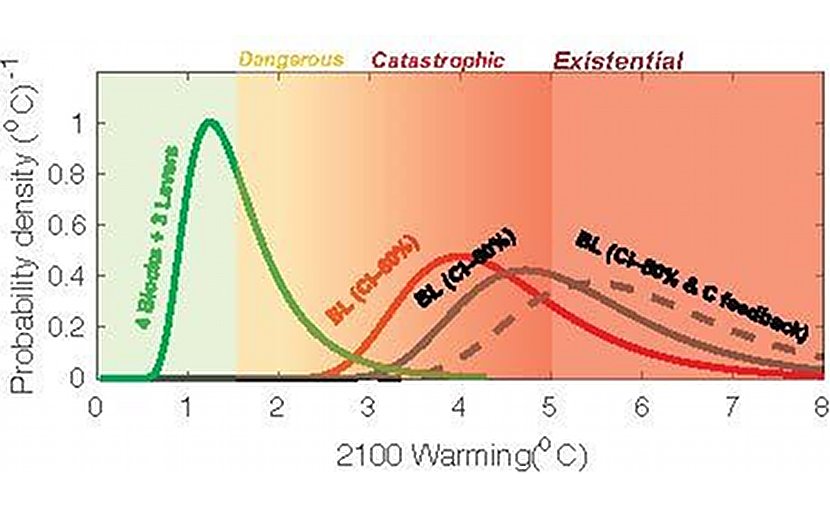
Researchers projected warming scenarios that vary based on what societal actions are taken to reduce emissions. Credit: Scripps Institution of Oceanography at UC San Diego
A new study evaluating models of future climate scenarios has led to the creation of the new risk categories “catastrophic” and “unknown” to characterize the range of threats posed by rapid global warming. Researchers propose that unknown risks imply existential threats to the survival of humanity.
These categories describe two low-probability but statistically significant scenarios that could play out by century’s end, in a new study by Veerabhadran Ramanathan, a distinguished professor of climate and atmospheric sciences at Scripps Institution of Oceanography at the University of California San Diego, and his former Scripps graduate student Yangyang Xu, now an assistant professor at Texas A&M University.
The risk assessment stems from the objective stated in the 2015 Paris Agreement regarding climate change that society keep average global temperatures “well below” a 2°C (3.6°F) increase from what they were before the Industrial Revolution.
Even if that objective is met, a global temperature increase of 1.5°C (2.7°F) is still categorized as “dangerous,” meaning it could create substantial damage to human and natural systems. A temperature increase greater than 3°C (5.4°F) could lead to what the researchers term “catastrophic” effects, and an increase greater than 5°C (9°F) could lead to “unknown” consequences which they describe as beyond catastrophic including potentially existential threats. The specter of existential threats is raised to reflect the grave risks to human health and species extinction from warming beyond 5° C, which has not been experienced for at least the past 20 million years.
The scientists term warming probability of five percent or less as a “low-probability high-impact” scenario and assess such scenarios in the analysis “Well Below 2°C: Mitigation strategies for avoiding dangerous to catastrophic climate changes,” which will appear in the journal Proceedings of the National Academy of Sciences on Sept. 14.
